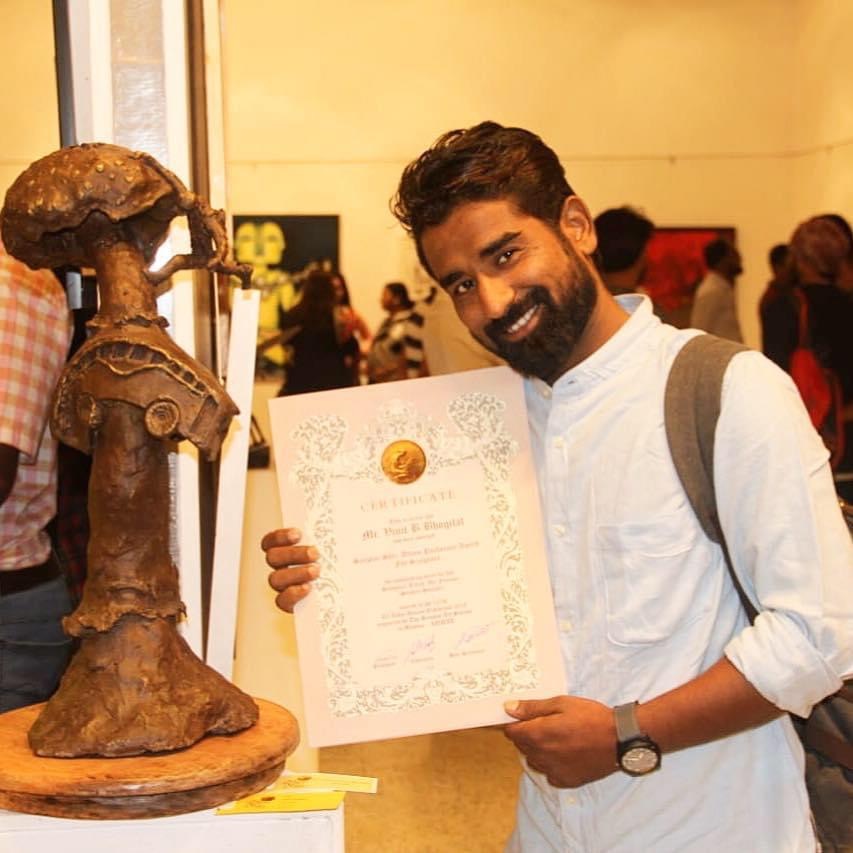Sculptor Vinit Barot, who hails from Vadodara, is the man behind the latest waste-to-art project in the Capital, heading a team that has turned tonnes of metal scrap into objects of art meant to entertain Delhiites.
A product of Ahmedabad’s C.N. College of Fine Arts, Barot’s creations grace public spaces in Delhi-NCR like the Waste-to-Wonder Dinosaur Park, Bharat Darshan Park and the Mahamaya Flyover in Noida.
Patriot caught up with Barot soon after his latest work at the Dinosaur Park was inaugurated.
Excerpts from the interview
How did you start making sculpture out of scrap? Did it start like a hobby?
I was always fascinated by scrap. During my education (fine arts) I was experimenting with different materials like stone, ceramic and other materials used for making sculpture. Back then I started practicing with metal scrap. I was fascinated with the scrap material and used to spend 4-5 hours every day just experimenting with scrap. Though it was not part of my bachelors’ syllabus, I gradually understood with time on how to deal with scrap material. Later, I polished it during my masters. I further refined it and experimented. At times, as an artist you interact with the material (scrap). It gives you an idea or an intuition on how it can be used or should be used. That’s how, now with more understanding of scrap, I sculpt more and more exhibitions.
How did the idea of Dinosaur Park originate?
Before making dinosaurs, I was working on similar projects in Delhi. I sculpted monuments and figures at Bharat Darshan Park and Shaheedi Park. I was also involved with exhibitions during the G20 summit meet last year. Working on these different projects gave me some recognition.
Later, I got the opportunity to design a whole park, the Dinosaur Park. I agreed to it. All I asked for was some artistic freedom which they gave me. We decided to make dinosaurs interactive for children. I wanted the public to not just see the scrap sculptures but connect with them. That’s why you see things like selfie points, slides among others.
How long was the process of crafting dinosaurs?
We had a team of about 10 artists. We created, designed, and brainstormed everything together. It took us around six months to reach here from scrap. We made 40 dinosaurs of 15 different types. Getting the same kind of scrap for same breed or type was very challenging. Being able to create different environment in the park like playful, scary with damaged cars was the favourite bit.
What kind of different scrap materials have you used?
Usually we get scrap from MCD (Municipal Corporation of Delhi). There are discarded light poles and old pipes. We also got a few cars which suffered accidents. It was very amusing to use them. Later, we realised that we need certain industrial scrap to make these dinosaurs look real. We requested this from MCD, to which they agreed. At times, I also went out in search of some specific scrap material.
How did you come up with the idea of having interactive objects?
People think sculpting these pieces from scrap is about welding discarded iron. For me, it is much more than that. Selection of scrap is one of the most challenging and interesting bits. At times, the scrap itself tells you how to use it. If you ignore that, it just becomes an iron piece. While designing the Dinosaur Park we made sure that we keep the creativity of the scrap alive. For instance, fitting a car inside the dinosaur belly, or using the tail as a slide for children. All these come with years of material observation and experimentation with scrap.





